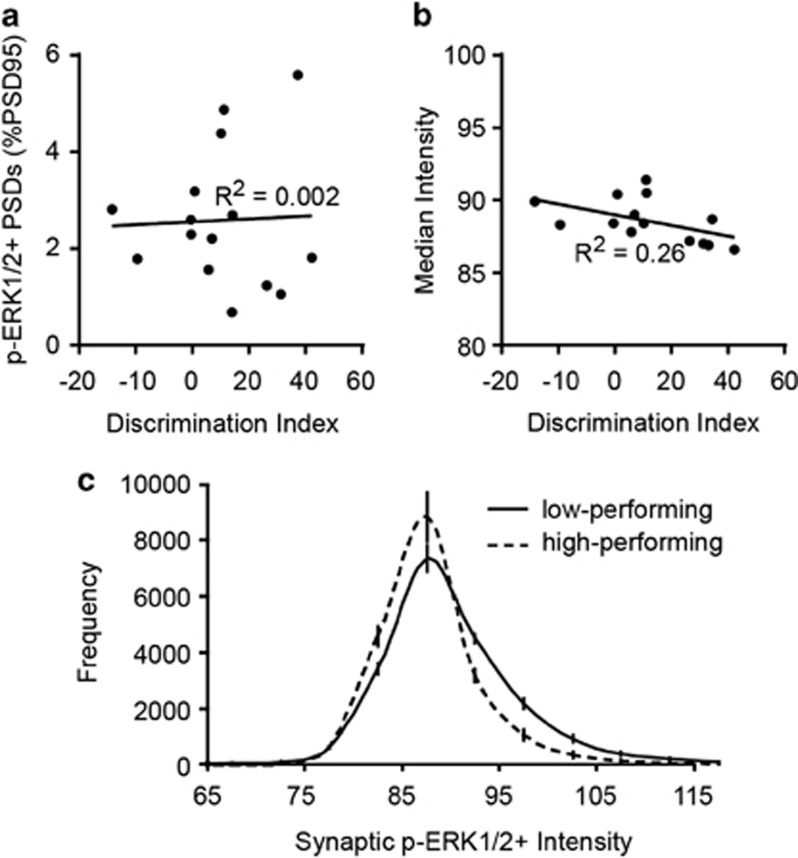Figure 4.
The synapses of BTBR mice with impaired long-term object location memory (OLM) contain more activated ERK1/2. (a) A linear regression between the number of field CA1 PSD95+ synapses containing dense p-ERK1/2 immunoreactivity and the OLM retention trial discrimination index of individual BTBR mice (N=15) was not significant (Pearson correlation, P=0.89; values represented as percent of total PSD95+ contacts). (b) A significant negative correlation (Pearson correlation, R2=0.26; P=0.05) was observed when comparing the median p-ERK1/2 immunolabeling intensity for elements double labeled with PSD95 with the retention trial discrimination index (N=15). (c) The BTBR mice were divided into high- (N=5) and low-performing (N=10) groups with the latter group consisting of all BTBR mice that fell below one SD of the mean of a B6 group run alongside the BTBRs. Histograms of p-ERK1/2 immunolabeling intensities for contacts double labeled with PSD95 illustrate a rightward expansion of the intensity frequency distribution in the low-performing, relative to the high-performing, group (plot shows group mean±SEM values).

